Home » Organization
ORGANIZATION DESIGN
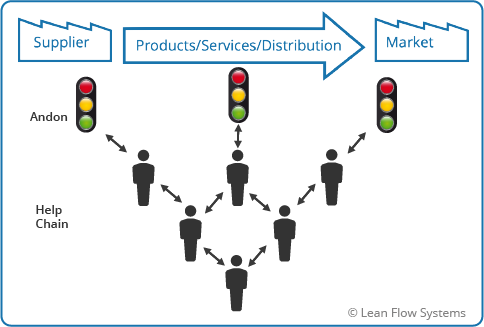

High Performance Learning
Honest, frequent and accurate communication is the glue to building a culture of continuous improvement. LFS collaborates at all levels of the company to develop processes that connect people, establish trust and build fellowship. We help people grow by teaching them how to better solve problems to root cause. The LFS approach is grounded in the Toyota Production System (TPS) and is summarized by the following quote from Taiichi Ohno, father of TPS:
Teamwork is Everything
“In modern industry, harmony among people in a group is in greater demand than the art of individual craftsmanship.”
-Taiichi Ohno, “Toyota Production System”
Organization Design Tools
Your team is the heart of the organization. We believe that there is a deep need in everyone to solve problems and contribute to the success of the company. There are six key elements to Organization Design:
- Workplace Organization – Organizing the shop floor and office to have the right tools in the right place to efficiently execute the job.
- Standardized Work – Developing work instructions is a building block to high quality, high productivity and optimal team coordination.
- Pace and Process Control – The pulse of the operation is monitored by systems that track metrics in real-time and calculate deltas to targets.
- Operator Multi-Skilling – Equipping people with the skills they need to keep products and services continuously flowing.
- Help Chain – Building a fast-acting, agile support structure to rapidly deploy the right people to the right place at the right time.
- Rewards and Recognition – Appreciating is the fuel that powers a world of trust and happiness.
Workplace Organization
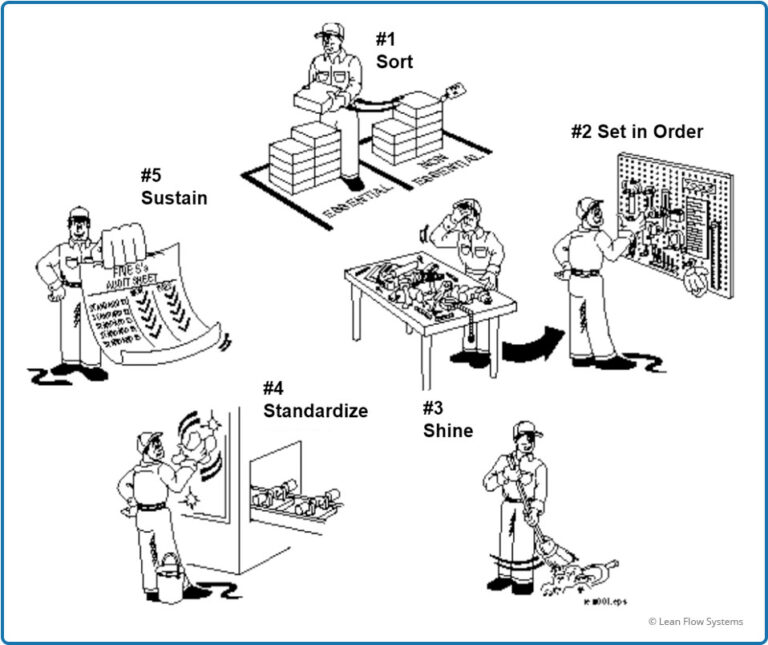
Clean Up
Who doesn’t feel great after organizing their garage or kitchen? The efficiency and control gained are amazing! And the power we feel when we can quickly access the tool we’re looking for with little effort is intoxicating. That feeling and the accompanying efficiency are what we get when we execute a great 5S event. The five “5’s” of workplace organization are:
- Sort – Retain what is essential and utilized on a regular basis, remotely store what is occasionally needed and eliminate obsolete items.
- Set In Order – Organize the essential items with clear labeling, grouping them into like categories or sequencing them in order of use.
- Shine – Clean, repair, replace, illuminate and, where appropriate, paint to make the workplace gleam.
- Standardize – Document and visually label best practices and work procedures to use as the standard to check actual performance against.
- Sustain – Assign responsibility and allocate time to check the workplace condition against standards.
5S is one of the simplest and quickest ways to eliminate non-value-added motion and drive positive culture change. Once complete, it becomes much easier to see when there is a problem with workplace organization.
Standard Work

Bedrock
The bedrock of great companies can be found in the work of each associate and the synchronization between associates. Standardized work is considered one of the most critical elements in operations excellence. Taken in its simplest form, it consists of the following elements:
- Content – Motions and thoughts occurring for each work step.
- Sequence – Order of each work step.
- Time – Standard time for each work step
- Outcome – Expected result in terms of safety, quality and cost.
- Location – Where the work steps should take place.
Sometimes these standards are very prescriptive and precise, for example, on an assembly line. Other times they are loose, a compilation of various standards and process steps dependent on varying work scenarios. Examples of the latter are Call Center Operators, Registered Nurses and Software Programmers. In all cases, deep-dive work design can yield breakthrough improvement.
Pace and Process Control
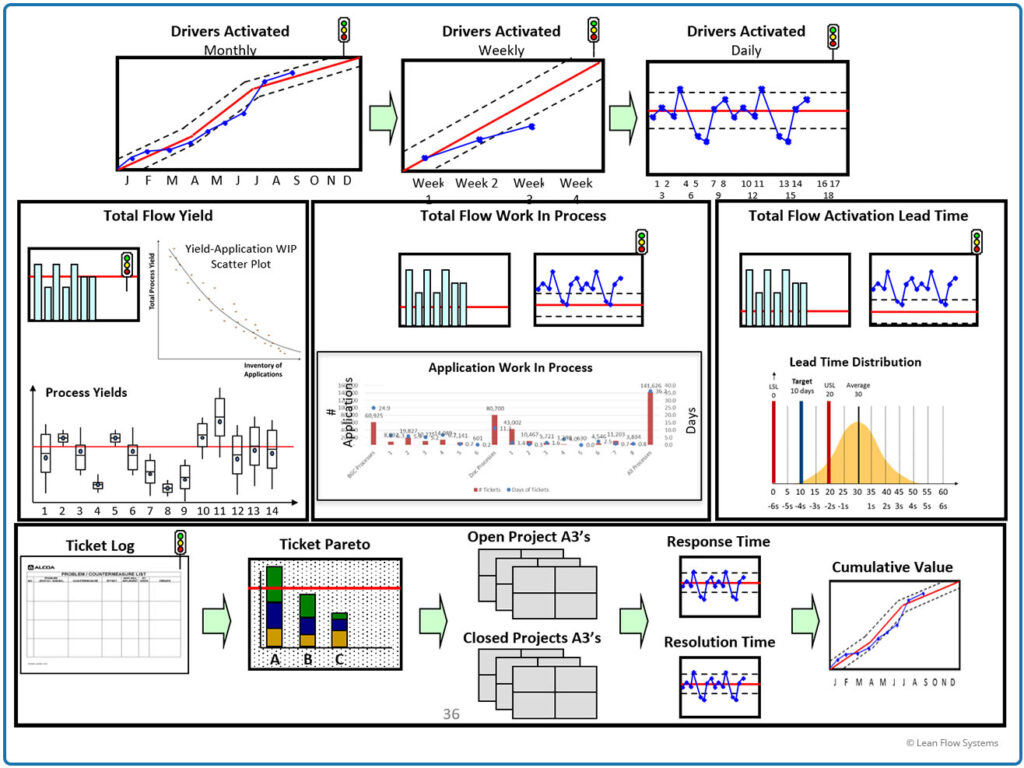
Control Center
What would your business be like if everyone knew the strategy, from the executive suite, through the leadership levels, up to the operating floor? If everyone had a clear view of their individual goals and the role they played in executing the strategy? What if each team member received real-time feedback on how they were performing to their goals? You would have a very focused and motivated team!
That is the goal of Pace and Process Control: customized dashboards for everyone. These systems, when designed carefully and thoughtfully, are indispensable to a great lean system. They allow leaders to quickly ascertain the following for a process:
- Condition right now.
- Problems that have occurred and how they are being handled.
- Trends in key metrics.
- Standards that are in place.
Operator Multi-Skilling
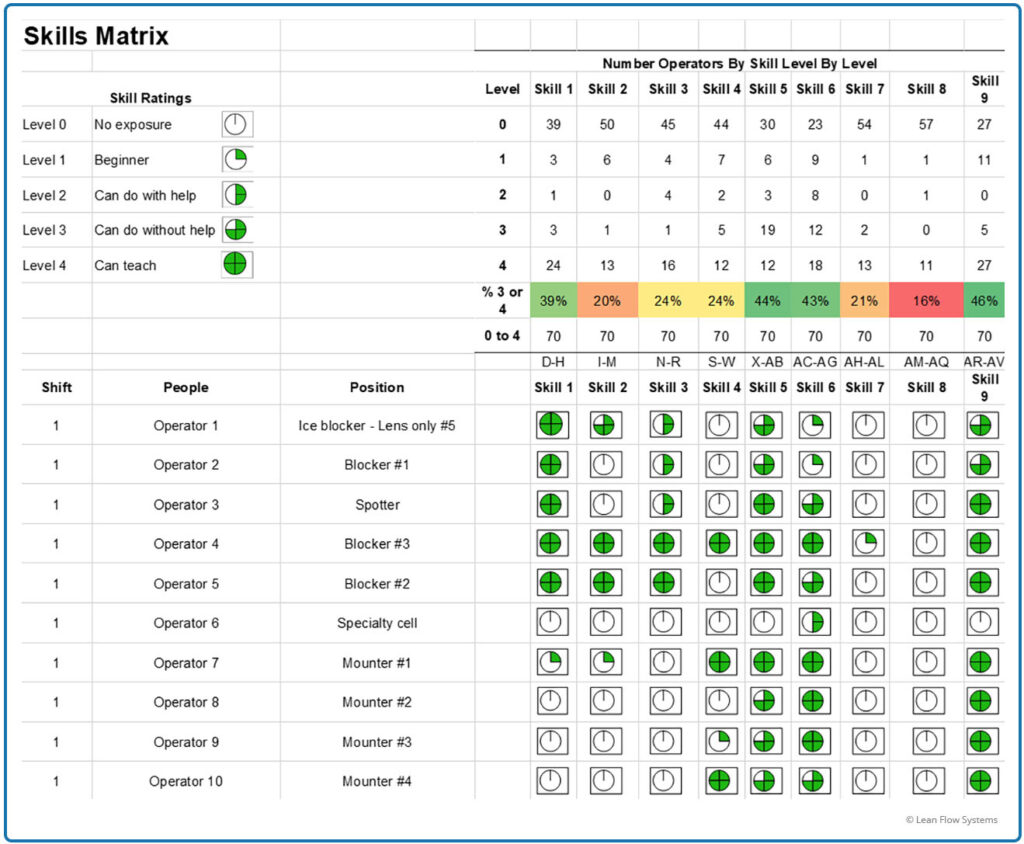
Developing Talent
A highly skilled and motivated workforce is a companies greatest asset. Multi-skilled associates facilitate continuous, fast product flow, provide great flexibility to handle unexpected events and drive a feeling of fulfillment, belonging and self-worth.
This doesn’t mean everyone learns everything, for that would lead to “Training Overprocessing”, in lean parlance. But carefully and strategically executed, a cross-training initiative will provide the foundation for a world-beating operation!
Help Chain
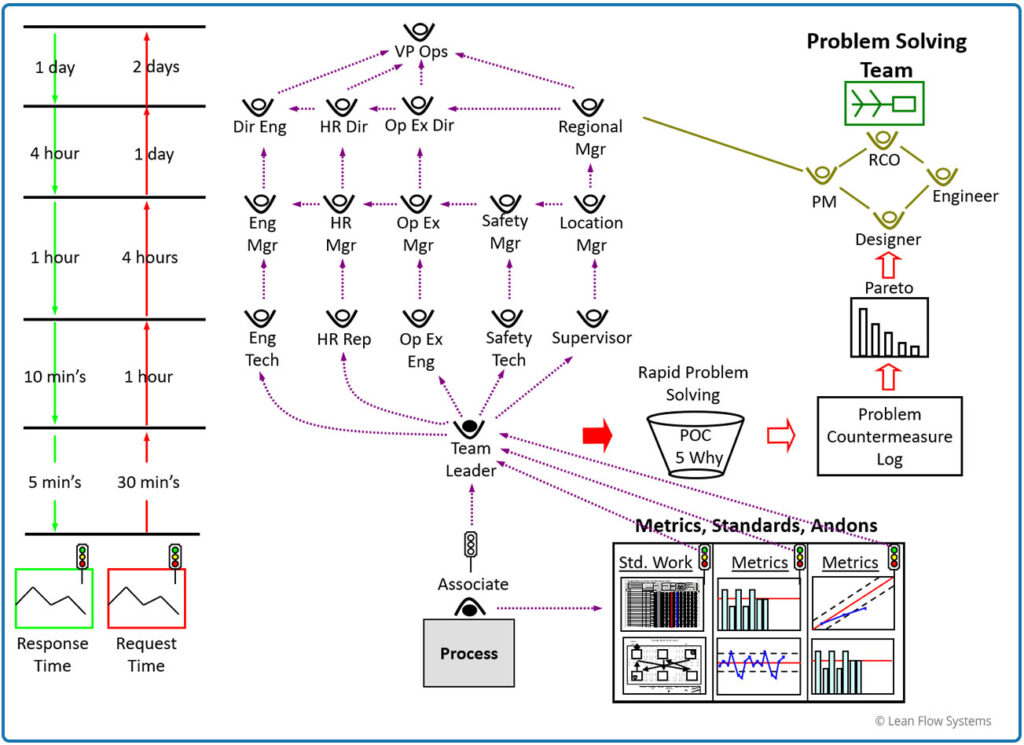
The Learning Organization
At its core, great lean businesses are learning organizations, masters at building skill at all levels of the company. And all great learning is guided by skilled, knowledgeable teachers who help solve problems to root. Problem occurrences are like crime scenes, the evidence of the crime degrading as time passes. Therefore, a lightning-quick response is essential to effective root cause problem-solving and skill-building. But leaders, technical experts and support personnel are a limited resource, so it is easier said than done. This conundrum may be the single greatest challenge to building a world-class enterprise, where a vast range of skills is needed throughout the day across a wide physical space.
How to do it? Through careful study, analysis and design that considers the type and rate of problem occurrence and the capacity of the support organization to respond.it
Rewards and Recognition
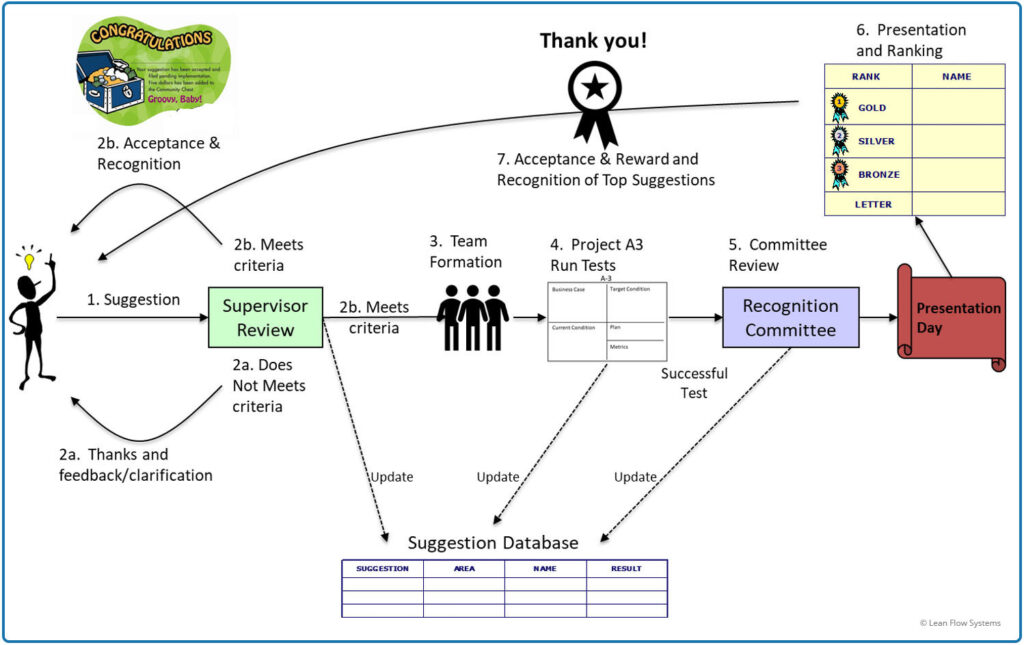
Appreciation
Appreciation is the fuel that powers a world of trust and happiness. These are words to embrace and live by. The world is a mirror, what you put out is what you get back. The more a team is appreciated for their value, the more value they return back to the operation. This giving becomes a way of life in great businesses.
Rewards and Recognition Programs are the way to build culture and drive real business value. But they don’t happen on their own, they need to be built with attention to business needs and process design.